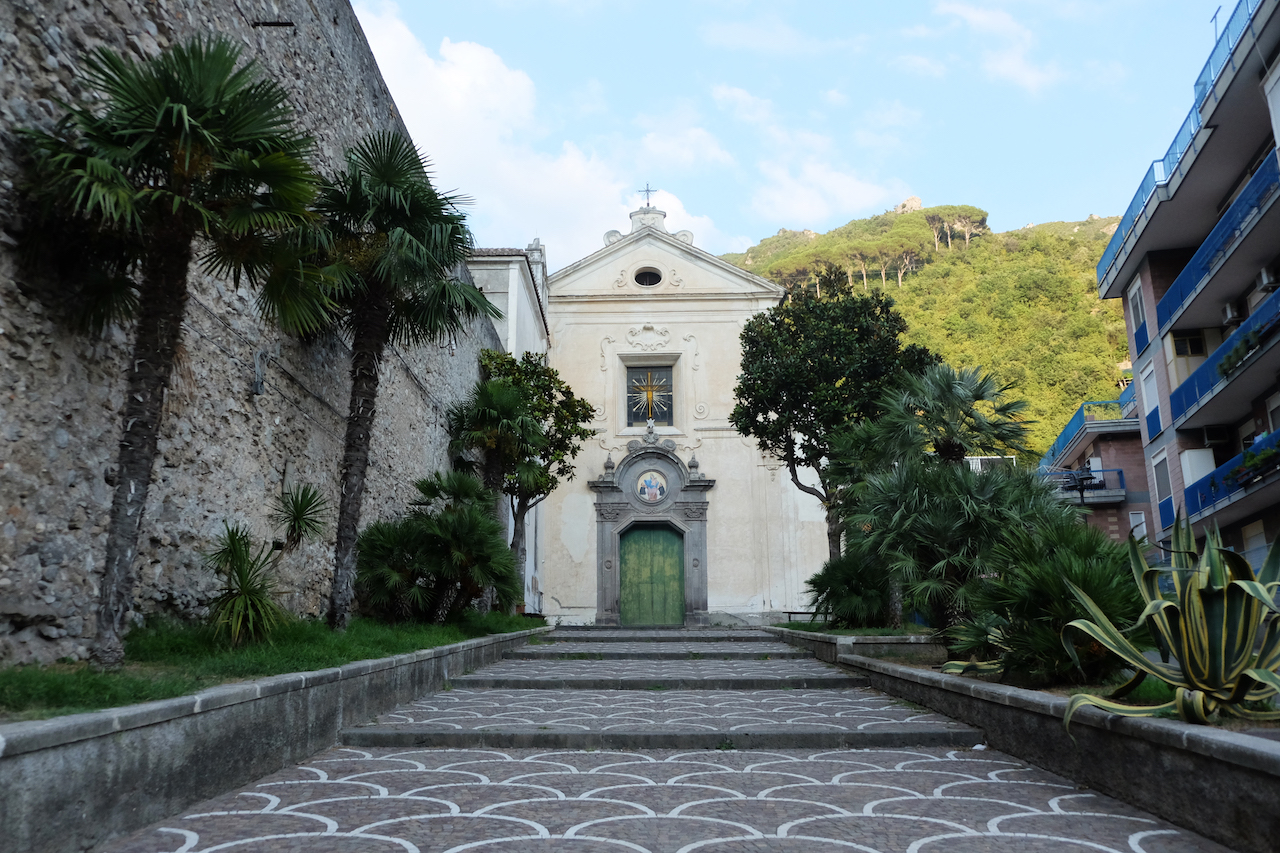Beloved by national and international directors, the destination becomes a film set.
October 20th, 2020. By Imma Tralli . Repost June 14th 2024
The town of Maiori is back in the movie theaters with director Christopher Nolan‘s long-awaited film, Tenet (2020), a cryptic and indecipherable spy movie, a puzzle for contemporary critics, starring John David Washington and Robert Pattinson.
It is not the first time Maiori has conquered the international cinema spotlight. In 1946 it had been, the turn of the film Paisà, followed later by Il Miracolo (second episode of L’Amore – 1948), La Macchina Ammazzacattivi (1948), Viaggio in Italia (1953) by Roman director Roberto Rossellini, who, during what has been called his Maiori period, loved the Amalfi Coast and Maiori in particular.
Italian neorealism on the Coast
Paisà, which has become one of the most representative films of Italian neorealism with primarily nonprofessional actors, consists of six episodes between July 1943 and the end of 1944.
Rossellini makes us relive a cross-section of Italy in the immediate postwar period, tracing with a lucid and painful gaze the proximity of death and humanity in the still-living desperation of the people battered by war and misery. At the same time, in the background, we witness the advance of the Anglo-American allies from Sicily to the Po delta.
![Maiori al Cinema, i luoghi e i personaggi del film Paisà di Roberto Rossellini [1946]](https://aac.demo.altrama.com/storage/images/244/Maiori-al-Cinema-Paisa-di-Roberto-Rossellini_1.jpg)
Paisà and Alfonsino Pasca: “Hey Joe si t’adduorme, io m’arrobbo ‘e scarpe.”
A native of Maiori is Alfonso Bovino, the 10-year-old street urchin whom Federico Fellini, then Rossellini’s assistant director, saw wandering around the set of the Torre Normanna maiorese. “It was a time of hunger. You would leave the house to fill your belly a little bit,” says Antonio Bovino, owner of the cozy Palazzo Cocò in Maiori and son of Alfonso, who will turn 85 in December.
He tells us about his father’s film adventure and when Fellini, turning to Rossellini, said, “Roberto, maybe I have found the scugnizzo we need.” Alfonso, who from that moment became Alfonsino Pasca, was thus chosen to play the tragic and immense role of the scugnizzo Pasquale in the second episode, the Neapolitan one.
“They went to my grandmother’s house to ask permission to take him to Naples to continue filming. After offering them barley, there was no coffee. My grandmother told them: the important thing is that you feed him. You can bring it to you,” Antonio continued.
Neapolitan scenes
In the Neapolitan episode, the scugnizzo Pasquale meets Joe, the African-American soldier of the military police, in a drunken state. They sit on the rubble of a building in Piazza Mercato in Naples, and as Joe falls asleep, little Pasquale recites the famous line, “Hey Joe si t’adduorme, io m’arrobbo ‘e scarpe.” “As my father tells me, back then, whoever woke up first would put on shoes. If there were five brothers and four pairs of shoes, one was left without them,” says Antonio. “It was not a movie but reality. My father played himself”.
A few days later, Joe finds Pasquale by chance and forces him to accompany him home to return his boots. There, he touches reality: a crowd of homeless people in an abandoned tuff quarry. The soldier asks little Pasquale, “Where are Mom and Dad?” “They’re dead with the bombs. Boom! Boom! You see the bombs. Boom! Boom!” Joe thus leaves him his boots, and the episode closes on Alfonsino’s deep gaze and his astonishing performance. “Perhaps it is because of this scene that it was awarded as one of the best films of the twentieth century,” Antonio concludes.

The locations of Paisà
The film opens with the Sicilian episode in the Convent of San Domenico di Maiori. When Anglo-American soldiers arrive in a silent and deserted town, the Germans are on the run, and the population is sheltered in the Convent.
Among them is the Sicilian Carmela, the daughter of fishermen, who offers to guide the soldiers to avoid the minefields. The next scene occurs at the Torre Normanna in Maiori, where Rossellini had arranged the available set for filming. Inside this tower appears the sweet and frustrating attempt at communication between Carmela and the soldier Joe, who is killed by the Germans shortly after.
Maiori between past and present
From the set of international espionage to the scene of existential drama, Maiori returns to the cinema, representing a bridge between past and present, “thus inserting itself in the vein of great films and great directors who have wanted to pay homage to this wonderful land and its people,” declares Luigi Ferrara, who together with the Rossellini family has curated the Roberto Rossellini Award for 13 years.
“Those who visit Maiori must discover its most hidden part, that of its film sets, thus getting in touch with the other jewel of Maiori: the local people with whom Rossellini was madly in love,” Ferrara concludes. The Roman director’s words are anecdotal: “They are crazy, sun-drunk! But they know how to live by availing themselves of a strength few of us possess: the power of imagination!”

